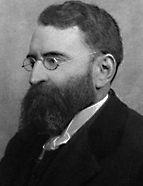

The position of director of the hospital had already been awarded in 1881 to António Maria de Sena, a professor at Coimbra, but the team was still incomplete. Sena preferred Júlio de Matos as his assistant, perhaps for reasons of exclusivity. On his return, Ricardo Jorge still retained some of his enthusiasm for neurology, setting up a histology laboratory while working as a substitute professor in the surgical department, where he trained Magalhães Lemos for his dissertation (A Região Psicomotriz [The Psychomotor Region]), before joining the hospital. Later, Eduardo Coelho corroborated a confidence made by Ricardo Jorge, stating: “he threw himself enthusiastically into neurology, even thinking of running the Conde de Ferreira Mental Asylum”, before becoming a hygienist and epidemiologist, devoting himself to the “cult of the Pasteurian creed” (Coelho, “Ricardo Jorge Mestre...”, 1946, pp. 247-251).
This marginalisation must have been painful for Ricardo Jorge. He still published texts in the field, on electrometry and electrodiagnosis, in 1884 and 1886, but, in a change of direction, he made a foray into thermalism and burst onto the public health scene with his lectures on Social Hygiene in 1884, which highlighted the poor sanitary conditions in Porto and the underlying epidemic threats. These lectures paved the way for public health, an area supervised at the Medical-Surgical School by José de Gouveia Osório, in the Department of Hygiene and Legal Medicine. Gouveia Osório rose to become mayor of Porto (1886-1887), but died soon after (23 August 1887) and was replaced in his chair by Silva Pinto and, as president, by another lecturer at the school, Oliveira Monteiro (1887-1892). In this municipal medical environment, Ricardo Jorge was called upon to study municipal sanitation and, later, to organise and direct municipal health services. It was only in 1895 that he became professor of Hygiene and Legal Medicine.
This work is financed by national funds through FCT - Foundation for Science and Technology, I.P, in the scope of the projects UIDB/04311/2020 and UIDP/04311/2020.
